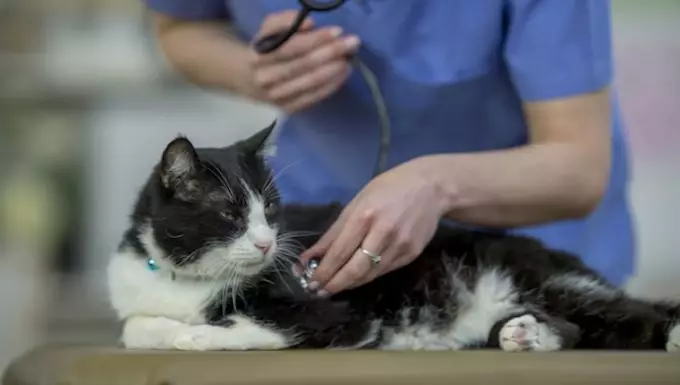Dilated cardiomyopathy (DCM) is a significant cardiac condition affecting cats, characterized by an enlargement of the heart chambers, which drastically impedes their ability to pump blood effectively. While it can arise in any feline, certain breeds, notably Siamese, Burmese, and Abyssinian cats, are notably more susceptible to this troubling ailment. Understanding the nuances of DCM in cats is essential for pet owners, as early intervention can be critical for managing the disease and improving the quality of life of their beloved companions.
DCM is commonly referred to as “enlarged heart” in veterinary circles, providing a somewhat simplified understanding of the condition. The dilatation of the heart chambers leads to diminished functionality, which can result in serious health implications for the affected feline. Unfortunately, the exact cause of DCM remains elusive, although dietary deficiencies, particularly a lack of taurine, are suspected to play a role. Male cats are more frequently diagnosed with this condition than their female counterparts, and given the genetic predisposition of certain breeds, ongoing research is critical to uncover the underlying factors contributing to the development of this heart disease.
Pet owners must remain vigilant for the signs of DCM, as subtle symptoms can indicate serious underlying issues. Commonly noted symptoms include:
– **Loss of Appetite**: A marked decrease in interest in food can be an early indicator of health problems.
– **Weakness and Depression**: A noticeable drop in energy levels and a lack of engagement with usual activities can suggest a cardiac issue.
– **Breathlessness and Coughing**: Respiratory distress may manifest through coughing or strenuous breathing, signaling heart failure or fluid buildup.
– **Heart Murmur**: Detected during a routine vet check, heart murmurs can be an indication of cardiac dysfunction.
Other symptoms can also present, such as hypothermia, varying heart rate (either low or high), and a noticeable aversion to exercise. Recognizing these symptoms is vital for prompt veterinary intervention.
The Diagnostic Journey
Upon noticing signs of ill health in their cat, a pet owner’s first step should be to consult a veterinarian. The diagnostic process typically starts with a detailed inquiry about the cat’s medical history and current symptoms. Following this, a physical examination is conducted, often including:
1. **Monitoring Heart Sounds**: Listening closely for murmurs and irregularities in heart rhythm.
2. **Electrocardiogram (EKG)**: This tool measures the electrical activity of the heart, revealing potential abnormalities.
3. **X-rays**: Imaging can provide insight into the overall size and shape of the heart and the presence of any fluid in the lungs.
The definitive diagnostic tool is the echocardiogram, which offers a visual representation of the heart’s structure and function.
Treatment Options and Management Strategies
The treatment of dilated cardiomyopathy necessitates a tailored approach, primarily based on the severity of the disease and the clinical presentation of the cat. In critical cases, hospitalization may be required, where advanced treatments, such as oxygen therapy, can be administered.
Medication is often prescribed to optimize heart function and mitigate symptoms. It is crucial for pet owners to adhere to the prescribed treatment regimen, maintaining the proper dosage and completing the course as directed by the veterinarian. Furthermore, dietary modifications, particularly a low-sodium diet, can significantly aid in managing the condition and improving the cat’s overall health.
Ongoing veterinary visits are essential in monitoring a cat’s recovery and adapting treatment plans as necessary. Regular check-ups ensure that any changes in the cat’s condition are promptly addressed and provide pet owners with peace of mind.
As DCM poses a serious health threat to affected cats, awareness and understanding of this condition are paramount. By recognizing symptoms early and seeking veterinary advice, pet owners can take crucial steps toward managing the disease. Experiences can vary greatly; if you’ve cared for a cat with DCM, your insights about the treatment journey could provide critical support to others facing similar challenges. Early intervention is key to transforming a potentially life-threatening condition into manageable health care, ultimately improving the lives of our cherished feline friends.


Leave a Reply